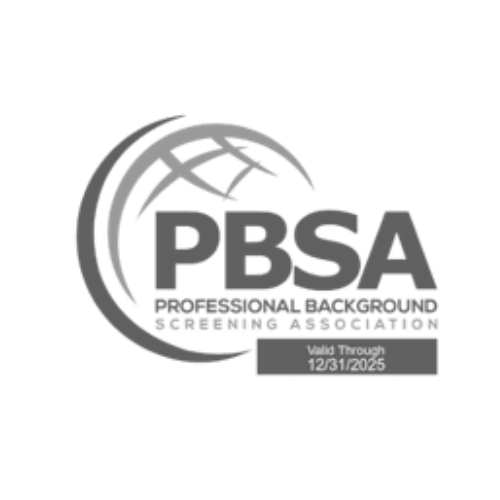Hiring has always involved an element of trust. But in today’s fast-moving job market—especially with more remote roles and digital applications—it’s becoming easier than ever for candidates to misrepresent who they are and what they’ve done.
A little exaggeration on a resume isn’t new. But what we’re seeing now goes beyond that. Fake degrees, jobs that never existed, certificates from made-up institutes, and even AI-generated resumes are making it harder to tell the real from the fake.
And when this kind of fraud slips through, the cost isn’t just a bad hire. It can lead to lost time, legal risk, damaged reputation, and in some cases, real harm—especially in sectors like healthcare, finance, and tech.
So how do we get ahead of this?
The New Ways People Are Faking Their Way In
We’ve gone well past the days of someone just tweaking their job title or adjusting a few dates on their resume. Here’s what’s showing up more often now:
Faked Experience
People are listing companies they’ve never worked at, or roles that don’t match their actual responsibilities. In some cases, they even go as far as creating fake reference contacts—emails and phone numbers that route back to friends or third-party services posing as HR.
Degrees That Don’t Hold Up
There’s an entire shadow industry of fake universities and diploma mills—some with professional-looking websites and certificates that appear legitimate. It’s not just happening locally. These fake credentials are often global, making it even harder to track down the truth.
Certifications That Sound Impressive—But Don’t Exist
We’re seeing more resumes filled with buzzword-heavy certifications or training courses from unknown providers. Some of these are fabricated; others are real, but the person never completed them.
The Digital Twist
Some job seekers are now using AI tools to write impressive resumes that are completely fabricated. A few are even turning to deepfake video tools to pass remote interviews by posing as someone else.
What’s Getting Missed
One of the biggest problems? These tactics can look incredibly convincing at first glance. And in a busy recruitment cycle, it’s easy to take a polished resume at face value—especially when the pressure is on to fill a role quickly.
But when background checks are rushed or skipped entirely, these issues come to light only after the person is hired. That’s when the real damage happens—missed deadlines, underperformance, broken trust with clients or partners, and internal team fallout.
What You Can Do to Stay Ahead
There’s no silver bullet—but there are smart steps you can take to cut down the risk. Here’s where to start:
Stop Relying on the Resume Alone
It sounds obvious, but resumes are often treated as the source of truth. They shouldn’t be. Treat them as a starting point, and always look for verification—especially for anything critical to the role.
Cross-check dates, locations, job titles, and institutions. If something doesn’t feel right, dig deeper or press pause until it’s confirmed.
Make Verification a Consistent Part of the Process
Too often, verification is saved for senior hires or skipped entirely when timelines are tight. But resume fraud doesn’t only happen at the executive level. It happens across departments, and even in temp or project-based roles.
Consistency is key. Make education, employment, and credential checks a standard step for every hire.
Ask for Proof—Not Just Claims
If a candidate says they’re certified in a specific software or completed a professional course, ask to see the certificate and check the issuing body. Real credentials should be easy to verify with a quick lookup or an email to the source.
The same goes for employment. Request official documents like experience letters or salary slips—and verify contact details independently. Don’t just call the number listed on the resume.
Use Real-World Tasks in Interviews
One of the most effective ways to cut through the noise is to include role-specific tasks or simulations during the hiring process. If someone claims to be an expert in financial modeling, ask them to build one. If they say they’ve led client pitches, ask how they’d structure one.
It doesn’t have to be a long process, but a simple real-world test can quickly show if someone knows what they’re talking about.
Don’t Skip Digital Footprint Checks
A quick review of a candidate’s LinkedIn, GitHub, Behance, or other online portfolios can be very telling. If their resume says one thing, but their public profiles tell a different story—that’s a red flag worth exploring.
Look at their network, endorsements, activity, and consistency. While social presence isn’t always complete, it can help validate or raise questions around someone’s background.
Educate Your Internal Teams
Hiring managers, recruiters, and even department heads should be aware of how common and sophisticated resume fraud is becoming. Share examples, warning signs, and encourage a culture where it’s okay to take a second look if something seems off.
Hiring should never feel like a race against time at the cost of accuracy.
It’s Not About Distrust—It’s About Diligence
None of this means you assume everyone is lying. It means you build a process that gives honest candidates a fair shot, while making it much harder for dishonest ones to slip through.
Fraudsters are getting more creative, but so can you. By applying just a few consistent checks and staying alert to the newer tricks, your team can avoid costly missteps—and build a workforce you can truly trust.
At AMS Inform, we help companies do exactly that—through robust, fast, and globally compliant background screening processes that dig deeper than a resume ever could. If you’re rethinking how you verify candidates, we’re here to help.

















